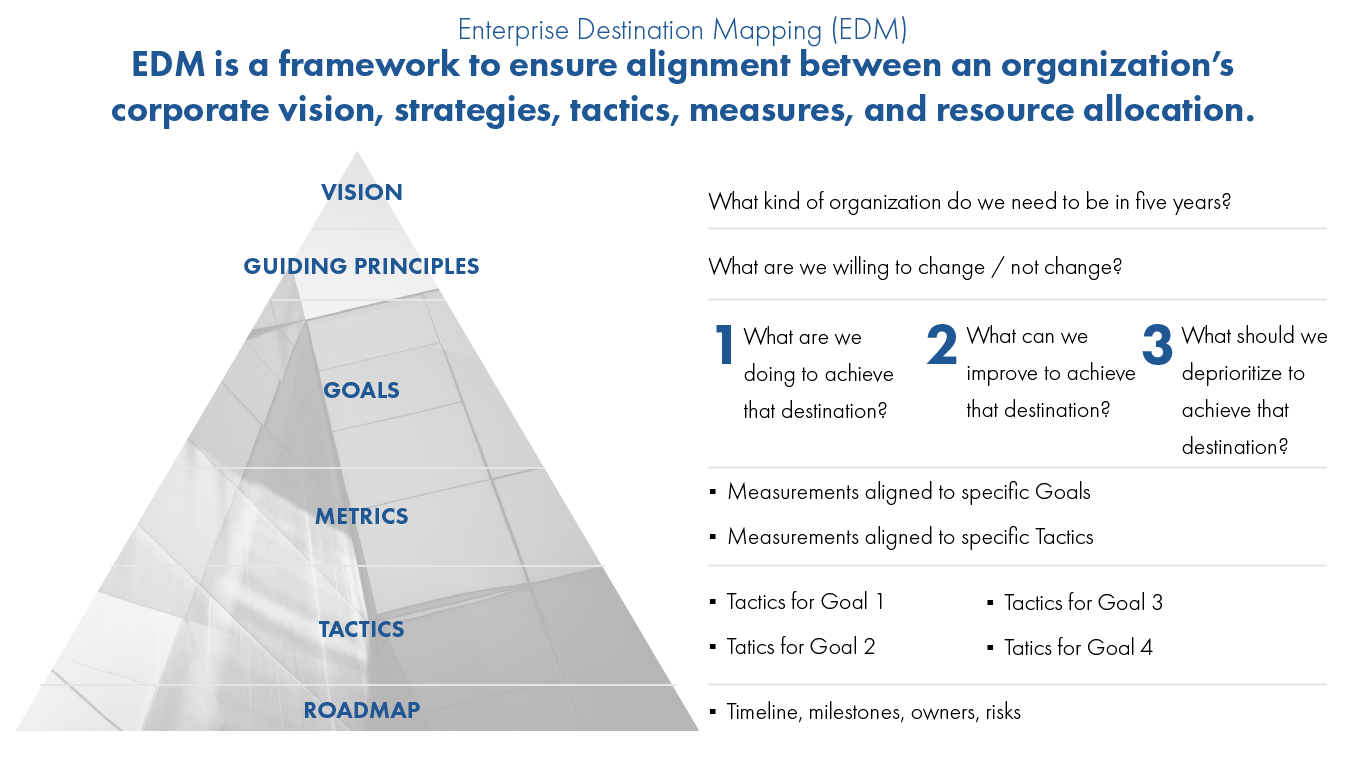Three Steps to Ensure Alignment Between Organizational Culture and Strategic Planning
According to recent studies, 60-90% of strategic plans fail to launch or achieve targeted outcomes. This means that most organizations do not achieve their strategic goals. There are several contributing factors as to why strategic planning fails – one of the most common being the lack of alignment between the organization’s strategy and its culture. When the organization’s culture doesn’t support its strategy, it’s incredibly challenging to achieve the desired results.
This piece explores how an organization can benefit from attaining greater success in strategic endeavors by being intentional about and clearly understanding company culture. We also dive into three steps to ensure successful alignment between organizational culture and strategic planning.
Core Values: Level Setting
Have you heard the saying, “Do as I say, not as I do”? That can be the difference between espoused organizational values and operational values. Espoused organizational values are what an organization says is important – it’s what they articulate, value, or desire to be. Operational values are actual behaviors and attitudes of the people within the organization that demonstrate the values they use daily.
When espoused and operational values align, the propensity for an organization to meet its strategic objectives increases. However, according to Gallup, 23% of U.S. employees strongly agree that they can apply their organization’s values to their work every day, and only 27% strongly agree that they believe in their organization’s values. Therein lies an opportunity to close the gap.
Culture fit is the alignment of an individual’s values and beliefs with those of an organization. It’s an important consideration in strategic planning because it can help to ensure that the organization’s strategy is aligned with its culture. Since this is the first time that there are five generations working together in the workforce (traditionalists, baby boomers, Generation X, millennials, and Generation Z), culture conversations are more often derailed, and instead, focus is placed on how generational differences impact an organization’s ability to grow, innovate, or transform. On the contrary, workplace culture is more about values than generational differences. While there are some generational differences in terms of work preferences and expectations, these differences are often overstated. Ultimately, what matters most is people share the same core values, regardless of their generation.
Culture As a Strategic Ally and Key to Long-Term Success
Culture is a competitive advantage that sets your organization apart from the competition. When the desired culture and strategy are aligned, employees are more likely to be motivated and engaged, which can lead to improved organizational and individual performance.
Creating a shared vision of culture, such as via Enterprise Destination Mapping, is critical to support the organization’s strategic objectives. For instance, consider what needs to change or not change to maintain your company’s market-leading position, manage a turnaround situation, or create synergies as a result of a merger & acquisition (M&A), just to name a few business scenarios.

How does your culture enable you to achieve your strategy?
Cultural change is always transformative and requires a period of unlearning and relearning. Once the transformational change goals are clearly understood in behavioral terms, (e.g., valued future behaviors are identified that support long-term company success) it becomes appropriate to do a culture assessment to determine how the current culture may aid or hinder the company’s long-term strategy.
Based on our experience, we encourage you to consider a three-step cultural intervention approach.
Three Steps for Aligning Organizational Culture and Strategic Planning
Step One: Obtain leadership commitment for cultural intervention. Cultural intervention will fail before starting without demonstrated leadership buy-in.
Step Two: Select groups for interviewees with different perspectives and lived experiences to be active voices and ambassadors of cultural change.
Step Three: Craft your aspirational state through a culture audit – a systematic approach to understanding the current state of your organization’s culture – and create a roadmap to achieve a desired future state. The cultural audit helps your organization to drive performance through:
- Identifying cultural attributes
- Measuring the prevalence of cultural indicators
- Assessing the organization’s ability to reinforce the desired culture
- Ensuring that cultural attributes drive business outcomes
The audit helps leaders think about how their current culture differs from their ideal state and how to close significant and consistent gaps in the predominant .
For advice on leading Enterprise Destination strategic planning and driving successful culture change adoption in your organization, please contact us today.
Learn more about our Strategy and Innovation and Change Management Consulting Services.
Subscribe to Clarkston's Insights
Contributions from Ilona Pesti



